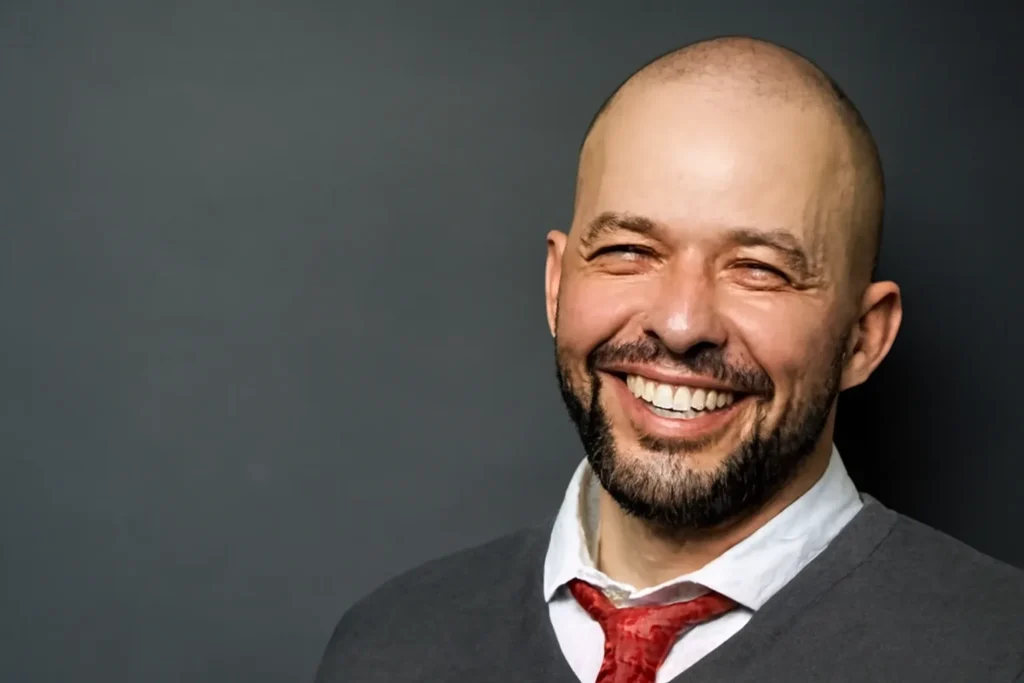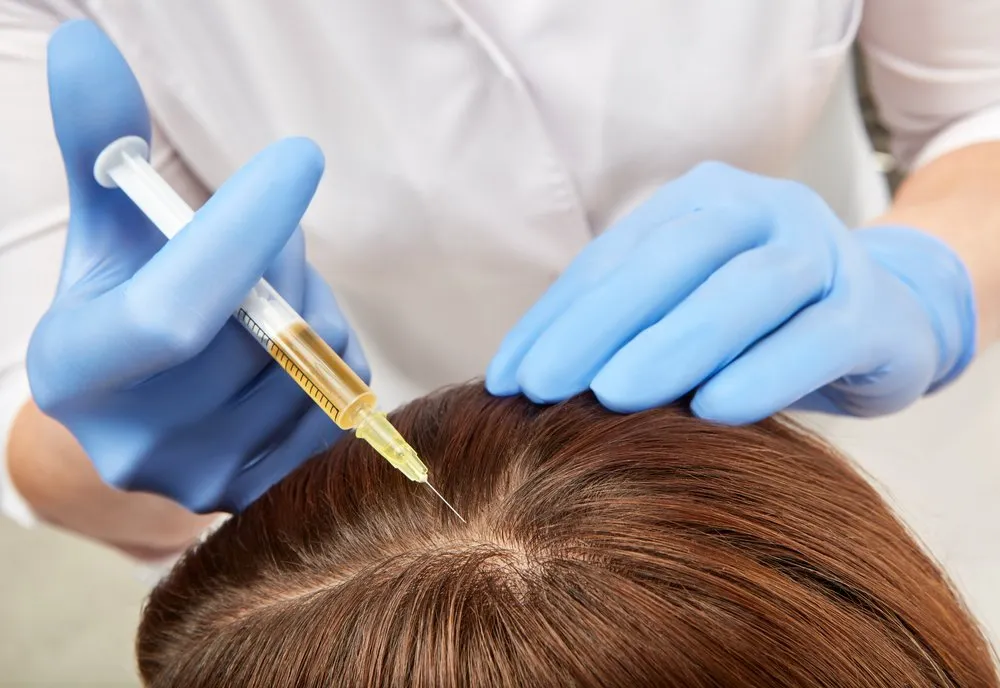Jon Cryer, best known for his role as Alan Harper on Two and a Half Men, has been a household name in television for decades. Aside from his witty on-screen presence, Cryer’s changing appearance, particularly his hair, has intrigued fans over the years.
Let’s take a closer look at how Jon Cryer Hair Loss became a topic of discussion and what his journey reveals about hair loss, acceptance, and available solutions.
When Did Jon Cryer Start Losing His Hair?

Hair loss for Jon Cryer didn’t happen overnight.
Early Signs of Hair Loss During His Career
Cryer first gained fame in the 1980s in films like Pretty in Pink, where he sported a full head of hair. But by the early 2000s, fans started noticing subtle changes in his hairline and density. His role in Two and a Half Men reignited conversations, as his hair seemed fuller on-screen than in candid appearances.
Public Reactions and Media Attention
Audiences speculated wildly—was he wearing a wig? Did he get a hair transplant? Or was it something else entirely? Cryer addressed the speculation with honesty and humor, endearing himself to fans even more.
Did Jon Cryer Get a Hair Transplant or Use a Wig?
Many assumed Jon Cryer had undergone a hair transplant. However, his real solution was more theatrical than surgical.
His Public Statement on Hair Loss Solutions
In a 2013 interview, Cryer revealed that he had been bald for years and that his appearance on television was enhanced using makeup and professional hairstyling.
“There’s nothing on the top anymore. It’s all sprayed and painted and cleverly manipulated,” he admitted.
Use of Makeup, Hair Systems, and Styling Techniques
Rather than opting for surgery, Cryer embraced temporary aesthetic fixes:
- Hair fibers and spray for volume
- Scalp makeup to mimic density
- Lighting and camera angles to his advantage
Why He Didn’t Opt for Surgical Restoration
Jon Cryer’s transparency suggests he was comfortable with his appearance and didn’t feel pressured into permanent treatments. His choice not only shows self-assurance but also raises awareness about non-surgical hair restoration techniques available to those hesitant about transplants.
How Jon Cryer Embraced Hair Loss
Confidence in Going Bald
Cryer’s candidness has served as inspiration for men dealing with hair loss. Rather than hiding or denying it, he’s openly embraced his baldness both on and off-screen.
Impact on His Image and Roles
Far from limiting his acting opportunities, Cryer’s look has evolved with his roles. He’s portrayed everything from quirky best friends to emotionally vulnerable single dads, hair or no hair.
Positive Media Portrayal and Fan Support
Fans and media outlets alike have praised Cryer for normalizing baldness in Hollywood, where youth and appearance often dominate casting decisions.
What Can We Learn From Jon Cryer’s Hair Loss Journey?
Breaking Hair Loss Stigma
Hair loss affects millions of men, yet it remains a sensitive subject. Cryer’s approach breaks this stigma, making it easier for others to discuss and deal with their own hair concerns.
The Importance of Self-Acceptance
His journey highlights a critical point: you can be successful, attractive, and confident without a full head of hair. For many, this shift in perspective is more valuable than any treatment.
Other Celebrities Who Embraced Baldness
Cryer joins the ranks of:
- Dwayne “The Rock” Johnson
- Jason Statham
- Patrick Stewart
All of whom prove that bald can be bold and beautiful.
Hair Loss in Men: Common Causes and Treatments
While Cryer chose not to undergo treatment, many do. Here’s what causes male hair loss—and how it can be addressed.
Male Pattern Baldness and Genetics
This is the most common cause of hair loss in men, often beginning with a receding hairline or thinning crown. It’s typically inherited and worsens with age.
Medical Options: Finasteride, Minoxidil, PRP
- Finasteride: Oral DHT-blocker that slows or halts hair loss
- Minoxidil: Topical stimulant that improves blood flow to hair follicles
- PRP Therapy: Uses your platelets to rejuvenate scalp follicles

Hair Systems and Non-Surgical Alternatives
For those like Cryer who avoid surgery:
- Hair fibers and scalp micropigmentation
- Custom wigs and toupees
These options offer immediate results with zero downtime.
Hair Transplant Options (FUE, FUT)
For long-term solutions:
- FUE (Follicular Unit Extraction): Minimally invasive, natural-looking results
- FUT (Follicular Unit Transplant): Cost-effective but leaves a linear scar
Expert Advice: Should You Treat Hair Loss or Embrace It?
Factors to Consider Before Seeking Treatment
- Stage of hair loss
- Medical history
- Lifestyle compatibility
- Budget and expectations
Psychological and Lifestyle Aspects
Hair loss can impact self-esteem. Some find confidence in treatments; others, like Cryer, in acceptance. Neither choice is wrong—what matters is how you feel.
FAQs About Jon Cryer’s Hair Loss
Did Jon Cryer ever confirm he wore a wig?
No, but he did confirm he used hair spray, makeup, and other cosmetic aids to appear fuller-haired on-screen.
What caused Jon Cryer’s hair loss?
Like many men, it appears to be due to male pattern baldness, a genetic condition.
Has he had any treatments?
No surgical treatments were confirmed. He’s been open about using non-surgical cosmetic solutions.
What do experts say about his approach?
Experts agree that his openness helps normalize different hair loss responses, whether surgical or not.
Jon Cryer’s Hair Loss and Public Perception
Jon Cryer’s honest approach to hair loss has opened the door for conversations around male baldness, self-esteem, and treatment choices. Whether you choose to treat hair loss or embrace it, his journey reminds us that confidence matters more than coverage.
Thinking about your hair loss journey? Whether you’re exploring non-surgical options, medications, or FUE hair transplants, our ABHRS-certified team is here to help.
Book a consultation with Dr. Rana Irfan in Islamabad today to get personalized, medically accurate advice tailored to your goals and lifestyle.
